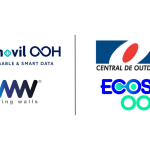AI simply means a clever data analytics algorithm, or voice recognition.
Instead of the term “AI” being used and the idea that many things nowadays are powered by AI, this term is also overrated as its often used by businesses.
At times, the term AI is applied to technology that does not even have the AI functions. In simple words, the AI term is just being thrown around by businesses.
For example, the AI of Apple’s Siri, seems like it does the work but is actually just programmed to answer questions in a certain manner and that is not what AI does.
Below is a conversation I had with Sabrina Azmi on the AI overuse among businesses.

Sabrina Azmi is Head of Client Services at CARMA ASIA. Her interest lies in several areas such ranging from economic development and politics to sports and culture. Personally, Sabrina is a spontaneous and passionate individual who’s always looking for new adventures.
Can you tell us the current state of media monitoring in SEA and why is automation being overused now?
Southeast Asia is an emerging market with over 400 million internet users and a booming digital economy – the internet penetration rate is over 70% in these countries.
With that, the media landscape has also changed greatly. Consumers now turn to online news publications and social media to look for information.
The low barrier entry on online publishing is lowering each day, and thanks to the internet’s pervasiveness, the propulsive power of social media and a growing number of messaging applications, a story published on an obscure blog can achieve worldwide reach.
Businesses today have realized that they need to automate and engage with AI to keep up with the increasing number of sources, and large volumes of media data out there.
The pandemic caused businesses to innovate and adapt their current processes to be more efficient. In an attempt to digitise and automate media monitoring and measurement practices, organisations are turning to automated/AI tech solutions.
Organizations nowadays are moving from traditional and turning to media monitoring software and data analytics tools to capture and analyse their media clippings to be able to capture large amounts of media data, instantly.
However, this has built an over reliance on AI and technology. While these tools are useful in capturing data and creating fancy charts, they will not be able to give you the full picture.
AI technology in media monitoring is still developing and limitations should be considered on what this technology alone can achieve.
For example: social media especially can be extremely nuanced, and a social listening tool might not be able to detect sarcasm or the cryptic messaging behind emojis.
How can CARMA help businesses to be more strategic in decision making in terms of media monitoring?
Data-driven decision making has accelerated exponentially. Data is constantly being requested by business leaders to support their business and communications strategies where they require benchmarks, data analysis, and the ability to drill down on numbers in real time.
CARMA believes very strongly in integrating technology and human intelligence. We provide software that captures media data and charts them to derive simple quantitative analysis.
But on top of that, we have a team of expert analysts that can interpret the data and provide qualitative analysis, to derive actionable insights.
CARMA is a strong proponent of media measurement best practice. Most importantly, we offer a consultative approach to measuring PR performance based on each client’s business and communications goals.
By understanding every organisation’s objective, stakeholders and target audience, we are able to measure the right metrics that allow our clients to make the right decisions.
Can you tell us more about the human element in PR’s use of media monitoring?
The human intelligence in PR adds the most value when interpreting the media data. Analysts, for instance, can decipher nuances in media reporting and social media posts.
They are more accurate than AI-driven media monitoring software at detecting sarcastic language, bias, and tone. This allows for more accurate sentiment analysis and detection of key issues.
On top of that, human analysts can detect trends in the data they analyse over time. They are able to see what is being said, but more importantly, what is also not being said, giving the organisation the ability to view their PR and communications performance from various angles.
An analyst who has worked on a client or industry for a long time will collect valuable knowledge and understanding, which will be translated into actionable recommendations for their clients.
Organisations believe that AI provides insight, however insight is truly derived from critical thinking, experience and added value from human intelligence.
How can media intelligence be used for more than just measuring coverage?
Media intelligence should go beyond simply measuring media coverage and media analysis. Performance in public relations and communications should be linked back to the organisation and its business goals.
This can be accomplished by integrating media analysis with other data sources to derive actionable insights.
By finding correlations between data sets, it paints a clearer picture for business leaders. Key reputational drivers are easily identified, as output, outtake and outcome metrics are represented within the organisation’s measurement strategy.
At CARMA, we combine media monitoring, social listening and media insights with public opinion surveys, focus groups and search trends data, which we then utilise various data sets to answer complex business problems our clients face.
MARKETING Magazine is not responsible for the content of external sites.











